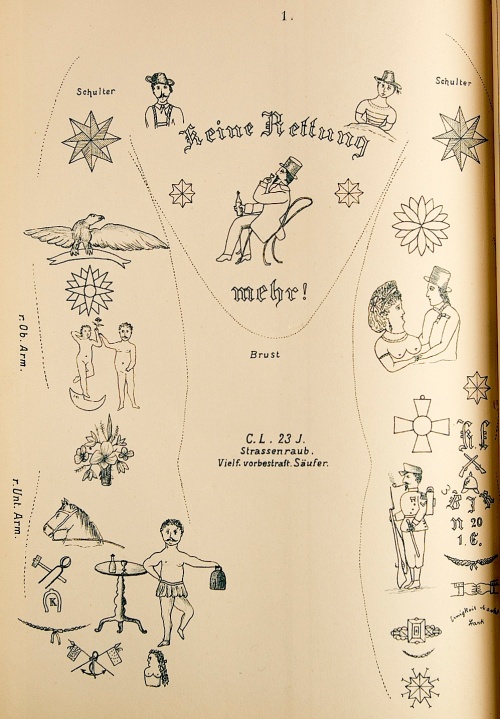I always get a cheap thrill when I notice a tattoo motif referenced in two different historical academic publications. It makes me think of issues that range from shared scholarship to lazy research to plagiarism and that things are not that much different today as compared to years, even centuries ago.
My recent post on Tattoo History Daily of Havelock Ellis’s image-quoting of part of a Cesare Lombroso plate caused me to look deeply at Lombroso’s original plate. And I realized that the motto written across the central figure’s chest was one that I had posted many months back from Lombroso’s contemporary Alexandre Lacassagne. Here are the two images:
(Lacassagne, Les tatouages étude anthropologique et médico-légale, 1881. Translation: “The past betrayed me, The present torments me, The future terrifies me”)
(Lombroso, L’uomo delinquente, 5th edition 1897, originally published 1876. Translation: “The past torments me, the present ?s me, the future terrifies me.”)
The quote differs slightly from Lacassagne to Lombroso, and that makes me wonder if both researchers were observing the same person, but one of the researchers just transcribed the motto wrong (or wasn’t paying proper attention to his sketches when drafting the drawings after the fact). It’s patently clear that these criminologists’ research findings were so problematically skewed because they were working with such specific populations (incarcerated or otherwise institutionalized men), but if they were working with such a limited group that both the Italian Lombroso and the French Lacassagne had to seek out the same man, their conclusions become even more appalling. The entire lingering stigma that tattoos are deeply connected to criminality and deviance comes from the writings of these criminologists, who patently ignored or dismissed the vast practice of tattooing going on on non-criminal bodies at the time.




